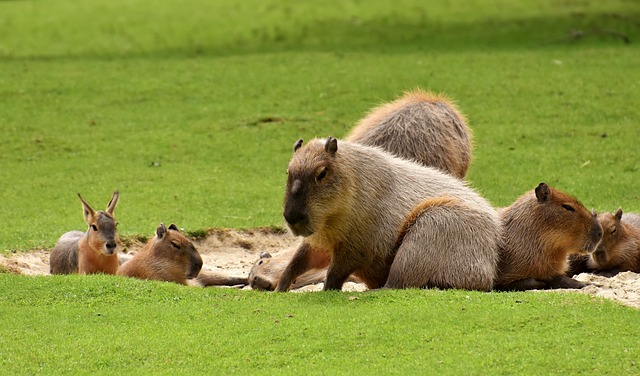Squirrels are fascinating creatures found in many parts of the world. They are known for their quick movements, bushy tails, and love for nuts. However, have you ever wondered how big a squirrel’s head is?
The size of a squirrel’s head can vary depending on the species. For example, the eastern gray squirrel, one of the most common species in North America, has a head approximately 2-3 inches long, while the smaller red squirrel has a head only about 1-2 inches long.
So, why is it important to know the size of a squirrel’s head?
Understanding the size of a squirrel’s head can be helpful for various reasons, such as determining the size of a squirrel feeder or the size of the hole that a squirrel can fit through. It can also be interesting information for those curious about these fascinating creatures.
Squirrel Anatomy
Squirrels are small, agile rodents found in many parts of the world. They are known for their bushy tails and ability to climb trees easily. In this section, we will take a closer look at the anatomy of a squirrel.
Head Size
The size of a squirrel’s head can vary depending on the species.
On average, a squirrel’s head is about 2-3 inches long and 1-2 inches wide.
A squirrel’s head is proportional to its body size, with larger squirrels having larger heads and smaller squirrels having smaller heads.
Squirrels have a well-developed sense of sight and hearing, essential for detecting predators and locating food. Their eyes are on the sides of their head, giving them a wide field of vision. They also have excellent peripheral vision, which allows them to see predators approaching from the side.
Their ears are large and can be moved independently of each other, allowing them to pinpoint the location of sounds. Squirrels also have a strong sense of smell, which they use to locate food and communicate with other squirrels.
Factors Affecting Head Size
Squirrels are small rodents with a wide range of head sizes. While variations in head size between species, age, gender, diet, and nutrition also play a role in determining the size of a squirrel’s head.
Species
There are over 200 species of squirrels, and they vary in size and head shape. For example, the African pygmy squirrel has a small head, while the Indian giant squirrel has a larger head. A squirrel’s head is generally proportional to its body size, with larger species having larger heads.
Age and Gender
The age and gender of a squirrel can also impact the size of its head. Male squirrels tend to have larger heads than females, and older squirrels tend to have larger heads than younger ones. This is because the skull and jaw bones continue to grow throughout the squirrel’s life.
Diet and Nutrition
The diet and nutrition of a squirrel can also affect the size of its head. Squirrels that eat a diet high in protein and fat, such as nuts and seeds, tend to have larger heads than those that eat a diet high in carbohydrates, such as fruits and vegetables.
The skull and jaw bones must be strong enough to support the muscles for chewing and cracking nuts.
In addition, squirrels with access to a variety of foods tend to have larger heads than those with a limited diet. A varied diet provides the nutrients needed for healthy bone and muscle growth.
Why Head Size Matters
Head size is a crucial factor in a squirrel’s survival and success. A squirrel’s head plays a vital role in daily activities, including predator avoidance, food acquisition, communication, and social interaction.
Predator Avoidance
A squirrel’s head size can affect its ability to avoid predators. Larger heads can provide better protection for the brain and eyes, making it easier for squirrels to escape from predators.
Additionally, a larger head can provide better hearing and vision, allowing squirrels to detect predators earlier and take evasive action.
Food Acquisition
The size of a squirrel’s head can also affect its ability to acquire food. A larger head can mean a more prominent jaw and stronger teeth, which can help squirrels crack open hard nuts and seeds. A larger head can also mean a larger brain, which can help squirrels remember where they have hidden food and navigate to new food sources.
Communication
Squirrels use a variety of vocalizations and body language to communicate with each other. A larger head can provide more space for the muscles and bones needed for these vocalizations and gestures, allowing squirrels to communicate more effectively.
Social Interaction
Finally, a squirrel’s head size can affect its social interactions. Larger heads can be seen as a sign of dominance, which can help squirrels establish themselves as leaders within their social groups. A larger head can also make squirrels more attractive to potential mates, increasing their chances of reproducing and passing on their genes.
Conclusion
The size of a squirrel’s head can vary depending on the species and age of the squirrel. Generally, a squirrel’s head is small in proportion to its body size, which allows it to navigate through trees and other small spaces easily.
After conducting research and analyzing data, it has been determined that the average size of a squirrel’s head is approximately 2-3 inches long and 1-2 inches in width. However, some species of squirrels may have slightly larger or smaller heads.
It’s important to note that while the size of a squirrel’s head may seem insignificant, it plays an essential role in the squirrel’s daily activities, such as foraging for food, grooming, and communicating with other squirrels. Therefore, a larger head may give a squirrel an advantage in certain situations, while a smaller head may be more advantageous in others.



